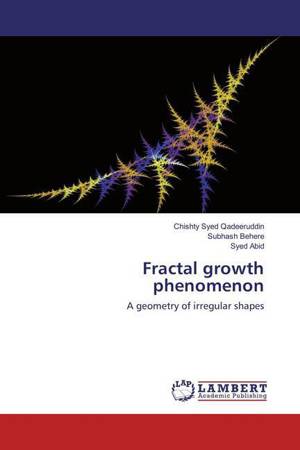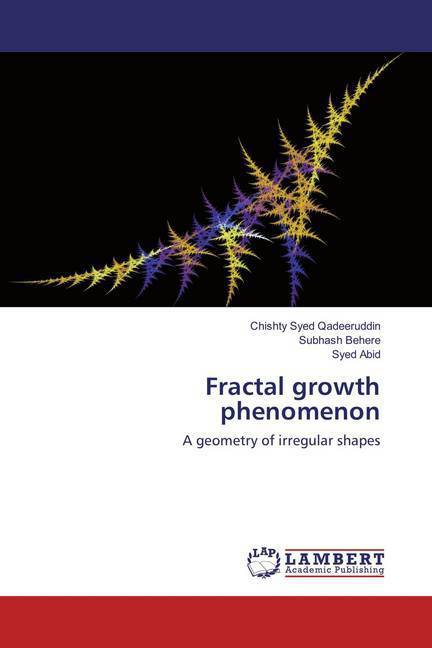
- Afhalen na 1 uur in een winkel met voorraad
- Gratis thuislevering in België vanaf € 30
- Ruim aanbod met 7 miljoen producten
- Afhalen na 1 uur in een winkel met voorraad
- Gratis thuislevering in België vanaf € 30
- Ruim aanbod met 7 miljoen producten
Zoeken
Fractal growth phenomenon
A geometry of irregular shapes
Chishty Syed Qadeeruddin, Subhash Behere, Syed Abid
Paperback | Engels
€ 54,45
+ 108 punten
Omschrijving
Nature's complexity, irregularity and self-similarity always seemed to be a challenge for explanation using the Euclidean geometry. The developments in the Fractal geometry have some answers to it. Theory of Fractals is the first and foremost concept used to describe, model and analyze the complex forms found in nature. To a casual observer, the co lor of their essential structures and their beauty and geometric form captivate the visual sense as few other things they have ever experienced in mathematics. To the students, fractals bring the classical mathematics out of realm of ancient history into new artistic and colorful forms of the twenty first century. To scientists, fractals offer a rich environment for exploring and modeling the complexity of nature. The central theme in the fractal geometry is to understand self-similarity. It is the property of a fractal object in which complete structure is contained in its every part,
Specificaties
Betrokkenen
- Auteur(s):
- Uitgeverij:
Inhoud
- Aantal bladzijden:
- 112
- Taal:
- Engels
Eigenschappen
- Productcode (EAN):
- 9783659857782
- Uitvoering:
- Paperback
- Afmetingen:
- 150 mm x 220 mm

Alleen bij Standaard Boekhandel
+ 108 punten op je klantenkaart van Standaard Boekhandel
Beoordelingen
We publiceren alleen reviews die voldoen aan de voorwaarden voor reviews. Bekijk onze voorwaarden voor reviews.








